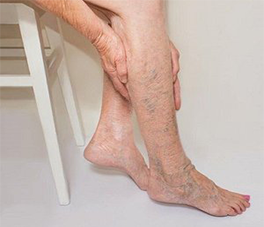Wound Care-POdiatry


A diabetic foot ulcer is an open sore or wound that occurs in approximately 15 percent of patients with diabetes and is commonly located on the bottom of the foot. Of those who develop a foot ulcer, 6 percent will be hospitalized due to infection or other ulcer-related complication.
Diabetes is the leading cause of non-traumatic lower extremity amputations in India, and approximately 14-24 percent of patients with diabetes who develop a foot ulcer will require an amputation. Foot ulceration precedes 85 percent of diabetes-related amputations. Research has shown, however, that development of a foot ulcer is preventable.
Anyone who has diabetes can develop a foot ulcer. People who use insulin are at higher risk of developing a foot ulcer(as they have advanced Diabetes), as are patients with diabetes-related kidney, eye, and heart disease. Being overweight and using alcohol and tobacco also play a role in the development of foot ulcers.
Ulcers form due to a combination of factors, such as lack of feeling in the foot, poor circulation, foot deformities, irritation (such as friction or pressure), and trauma, as well as duration of diabetes. Patients who have diabetes for many years can develop neuropathy, a reduced or complete lack of ability to feel pain in the feet due to nerve damage caused by elevated blood glucose levels over time. The nerve damage often can occur without pain, and one may not even be aware of the problem. Your podiatrist can test feet for neuropathy with a simple, painless tool called a monofilament.
Vascular disease can complicate a foot ulcer, reducing the body's ability to heal and increasing the risk for an infection. Elevations in blood glucose can reduce the body's ability to fight off a potential infection and also slow healing.
Because many people who develop foot ulcers have lost the ability to feel pain, pain is not a common symptom. Many times, the first thing you may notice is some drainage on your socks. Redness and swelling may also be associated with the ulceration and, if it has progressed significantly, odor may be present.

Once an ulcer is noticed, seek podiatric medical care immediately. Foot ulcers in patients with diabetes should be treated to reduce the risk of infection and amputation, improve function and quality of life, and reduce health-care costs.

Podiatrists have become the point persons on the wound management team, often the first to recognize the presence of or the impending formation of a limb- and life-threatening wound. A typical lower extremity examination with a podiatric focus considers the patient from 4 key viewpoints:
Assessment that includes these 4 points is essential to properly treat a lower extremity wound. The overlapping of causes from these 4 areas often further complicates the treatment plan essential to heal such wounds.
Expertise in these key areas makes podiatrists essential referral sources for other providers whose focus may typically be concentrated on other body systems.

The primary goal in the treatment of foot ulcers is to obtain healing as soon as possible. The faster the healing, the less chance for an infection.
There are several key factors in the appropriate treatment of a diabetic foot ulcer:
Not all ulcers are infected; however, if your podiatrist diagnoses an infection, a treatment program of antibiotics, wound care, and possibly hospitalization will be necessary.
To keep an ulcer from becoming infected, it is important to:
For optimum healing, ulcers, especially those on the bottom of the foot, must be “off-loaded.” You may be asked to wear special footgear, or a brace, specialized castings, or use a wheelchair or crutches. These devices will reduce the pressure and irritation to the area with the ulcer and help to speed the healing process.
The science of wound care has advanced significantly over the past ten years. The old thought of “let the air get at it” is now known to be harmful to healing. We know that wounds and ulcers heal faster, with a lower risk of infection, if they are kept covered and moist. The use of full-strength betadine, hydrogen peroxide, whirlpools, and soaking are not recommended, as these practices could lead to further complications.
Appropriate wound management includes the use of dressings and topically-applied medications. Products range from normal saline to growth factors, ulcer dressings, and skin substitutes that have been shown to be highly effective in healing foot ulcers.
For a wound to heal, there must be adequate circulation to the ulcerated area. Your podiatrist can determine circulation levels with noninvasive tests.
Tightly controlling blood glucose is of the utmost importance during the treatment of a diabetic foot ulcer. Working closely with a medical doctor or endocrinologist to control blood glucose will enhance healing and reduce the risk of complications.
Surgical Options: A majority of non-infected foot ulcers are treated without surgery; however, if this treatment method fails, surgical management may be appropriate. Examples of surgical care to remove pressure on the affected area include shaving or excision of bone(s) and the correction of various deformities, such as hammertoes, bunions, or bony “bumps.”
Healing time depends on a variety of factors, such as wound size and location, pressure on the wound from walking or standing, swelling, circulation, blood glucose levels, wound care, and what is being applied to the wound. Healing may occur within weeks or require several months.